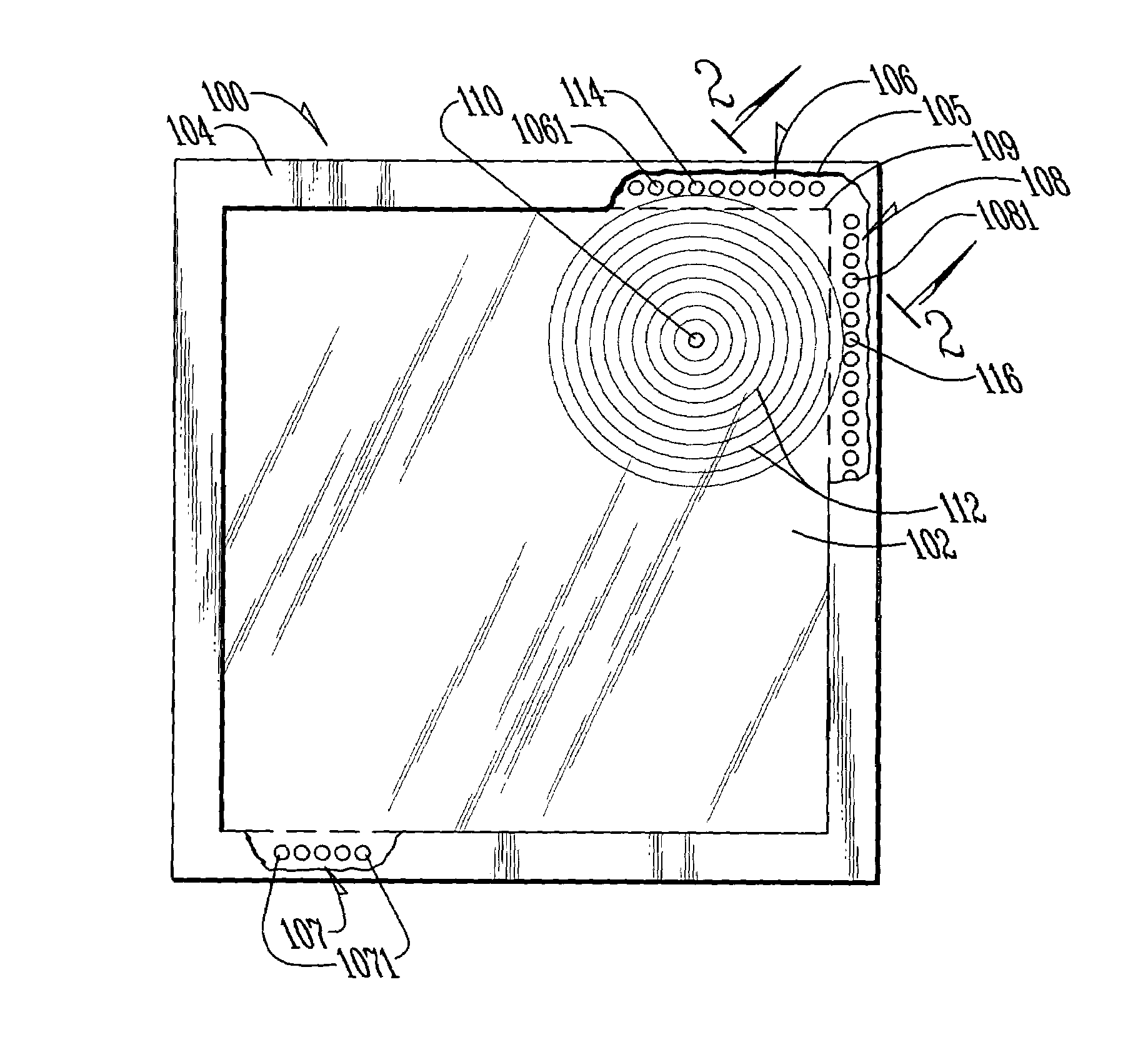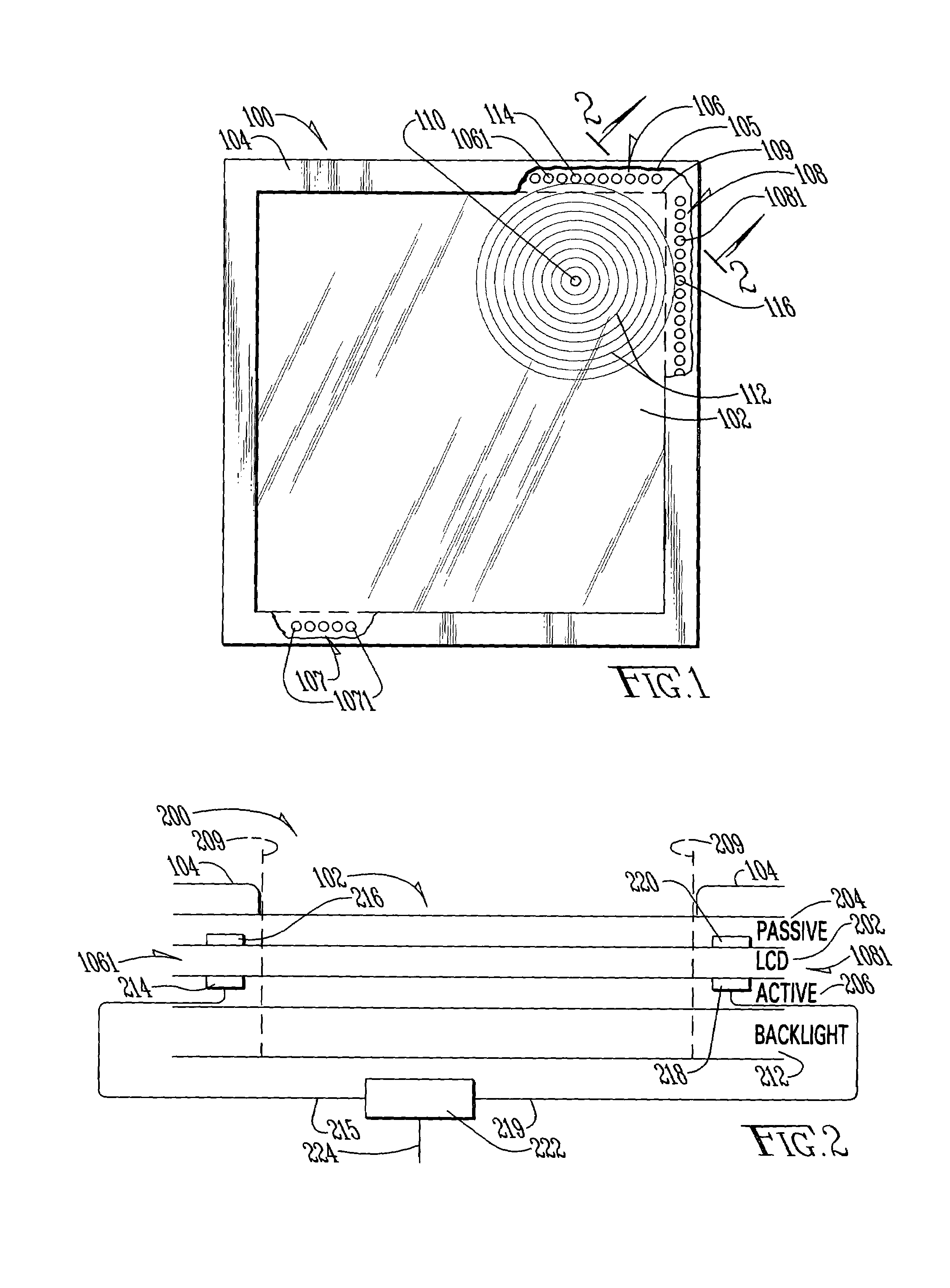Method and apparatus for data entry for a liquid crystal display
a liquid crystal display and data entry technology, applied in the field of liquid crystal display data entry, can solve the problems of reducing the quality of liquid crystal display, and increasing so as to achieve the effect of increasing reflection and/or image degradation, and not reducing the difficulty of viewing images
- Summary
- Abstract
- Description
- Claims
- Application Information
AI Technical Summary
Benefits of technology
Problems solved by technology
Method used
Image
Examples
Embodiment Construction
[0014]Now referring to the drawings wherein like numerals refer to like matter throughout, and more specifically to FIG. 1, there is shown an LCD with touch screen system of the present invention, generally designated 100. The description herein focuses upon LCD systems used in the cockpit of an aircraft because it is believed that many of the features of the present invention are particularly well suited for use in an aviation environment. However, it should be understood that other environments are equally applicable, and they are intended to be included within the scope of the present invention. LCD system 100 includes a viewing surface 102, which could be any type of liquid crystal material, but a multi-domain vertically aligned liquid crystal may be preferred. A bezel 104 is shown about the periphery of the viewing surface 102. A jagged cut-away line 105 represents an edge of a portion of the bezel 104 which is cut away. The dashed line 109 represents the location of the normal...
PUM
 Login to View More
Login to View More Abstract
Description
Claims
Application Information
 Login to View More
Login to View More - R&D
- Intellectual Property
- Life Sciences
- Materials
- Tech Scout
- Unparalleled Data Quality
- Higher Quality Content
- 60% Fewer Hallucinations
Browse by: Latest US Patents, China's latest patents, Technical Efficacy Thesaurus, Application Domain, Technology Topic, Popular Technical Reports.
© 2025 PatSnap. All rights reserved.Legal|Privacy policy|Modern Slavery Act Transparency Statement|Sitemap|About US| Contact US: help@patsnap.com


